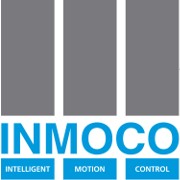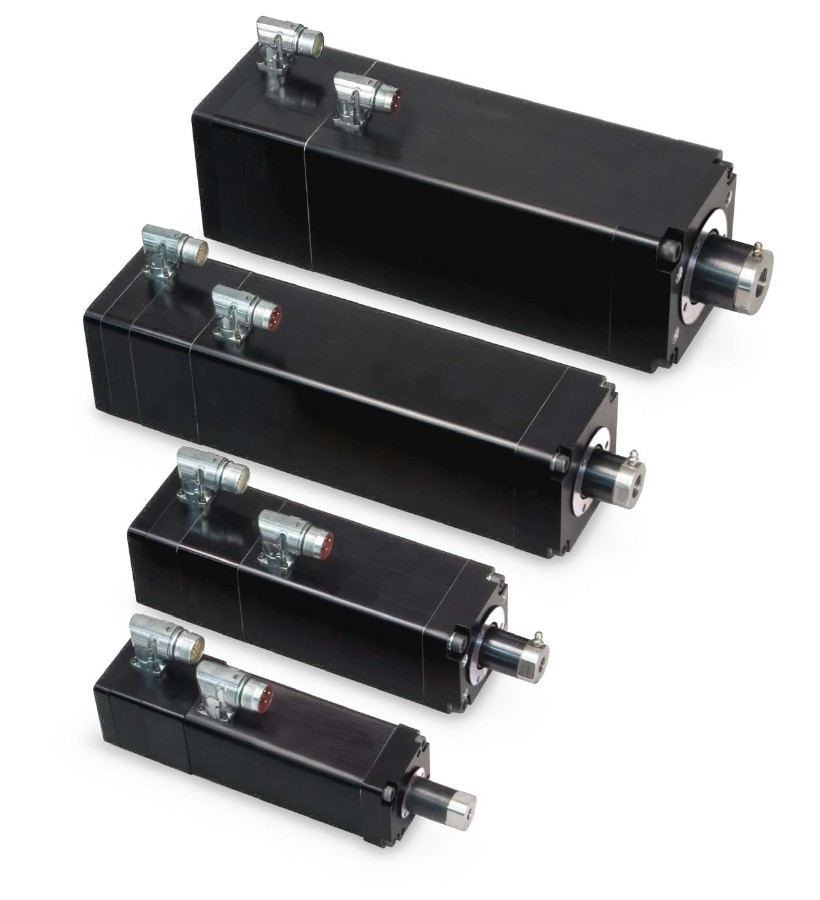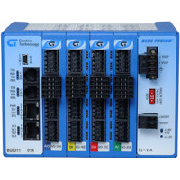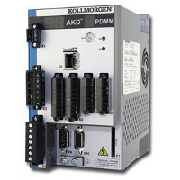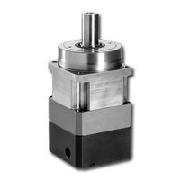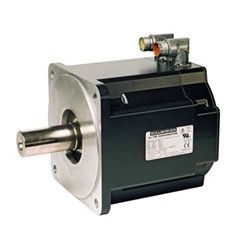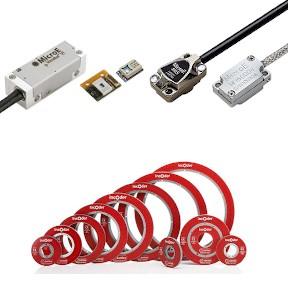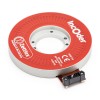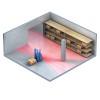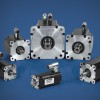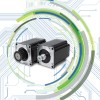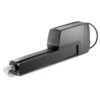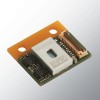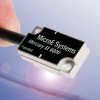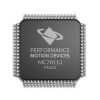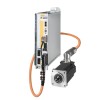Intelligent Motion Control Ltd (INMOCO)
For over three decades INMOCO has been at the forefront of Industrial Automation and Motion Control offering a comprehensive range of motion control products covering compact Servo Amplifiers, Position Controllers, Gearheads, Stepper Motors and Controllers, Linear Motors, Sensors, and Electric Actuators. More recent additions to the product range include High Precision Linear and Rotary Encoders.
Today, INMOCO not only provides products with application and after sales support, but can also incorporate those products into customer-specified electromechanical sub-assemblies, which also includes testing and calibration. These latest additions to our services not only enables our customers a "Plug and Run" solution, but also enables them to reduce their supplier base.
Our facilities include system engineering, ex-stock sales distribution, building and testing sub assemblies and a class 10,000 clean room facility.
-
Direct drive motors with zero cogging enable smooth control
24 March 2020Zero cogging direct drive motors are providing smooth motion control for OEMs of scanning, pointing, measuring and cutting machines. In the UK, INMOCO is distributing Celera Motion’s Agility Series compact frameless motors. These motors achieve high accuracy, continuous motion profiles that are required in medical, scientific, industrial and microelectronic applications.
Agility Series brushless motors deliver zero cogging, low torque ripple, and minimal vibration, which creates smooth velocity control and high accuracy positioning. Featuring a slotless profile, this removes the cogging jerk associated with slotted motors and instead, provides highly controlled torque flow. Agility Series’ magnetic design also removes peaks in torque and generates less than 2% torque ripple, creating a smooth motion profile, particularly evident at slower speeds. This makes the Agility Series highly suited for applications requiring high accuracy at lower speed continuous torque, such as cutting.
The Celera Motion Agility Series also features high mechanical stiffness and low rotor inertia. In combination with the design of the windings and the motor’s lower torque ripple, the Agility Series provides accurate control of high dynamic axes for peak-duty applications.
With a high torque density and a low-profile design, the Agility Series is available in a variety of form factors, starting at 19mm outside stator diameter. The reduced dimension design of the frameless motors enables development of a small overall machine footprint with tight integration for compact, lightweight, precision assemblies. The motor design also features a large through hole for cable routing, enabling fast and simple installation and machine build.
Celera Motion, supported in the UK by INMOCO, also works closely with OEMs on bespoke projects. Support ranges from motor customisation, including windings and form factors, through development of a complete mechatronic system with encoders, servo drives, and associated motion control technology. In-depth design consultation is available with INMOCO’s engineers, who integrate with Celera Motion’s applications team for solution development.
The Agility Series generates between 0.041 Nm and 15.10 Nm continuous torque and peak torque from 0.123 Nm to 45.29 Nm. The motor series is also compatible with a wide range of drives and controllers.
About INMOCO
Established in 1987, INMOCO now offers an extensive range of motion control equipment including: compact servo amplifiers, position controllers, stepper motors, PLC controllers, linear motors, sensors, electric actuators and gearheads. INMOCO’s product portfolio is supported by extensive applications and technical expertise, in addition to customer-specified electro-mechanical development and sub-assembly services; including calibrating and testing in a class 10,000 clean room facility.
-
Compact frameless direct drive motors newly available from INMOCO UK
28 February 2020A range of low profile direct drive motors with a compact and frameless design are now available from INMOCO in the UK. Celera Motion’s Omni™ Series direct drive motor range features high torque density in a compact design, suited to high performance, reliable and compact systems.
Highly utilized in medical equipment requiring low profile precision rotary axis control, the Omni Series is designed for use with applications such as surgical robotic arms. With features including high acceleration, zero backlash and high mechanical stiffness, as well as low inertia and reduced settling time, the Omni Series provides optimal control accuracy of highly dynamic axes. Low cogging also delivers accurate and smooth motion.
Combined with its low footprint design and minimal, compact cabling, Omni Series motors are optimal for use within robotic axis joints. Based on a frameless construction, the direct drive motors are integrated within a robot joint to drive a high ratio gear set. Characterised by an increased torque potential as a result of a direct drive motor’s higher pole count, the Omni Series is able to provide high output from compact dimensions, beneficial for medical robot applications where footprint is at a premium.
A key advantage of the Omni Series is Celera Motion’s customisation services, where windings, stator lengths, flanges and form factors can be tailored to meet application requirements. Celera Motion’s application engineering team works directly with OEMs to develop customised projects - rotary stages, electronics, controls and encoders. This also means that Celera Motion is equipped to develop a complete mechatronic sub-system. Following specification, Celera Motion provides analysis and modelling development prior to presentation of a prototype. The design is then selected, tested and validated for supply chain manufacture, before entering serial production. INMOCO’s UK engineering team provides initial consultation and facilitates the process with Celera Motion’s US-based applications designers.
The Omni Series comprises the UTH high torque motor, UTL low to medium torque, and the UTO for applications which require an outside rotating configuration. The UTH high torque motor achieves a peak torque of 47.7 Nm, a continuous duty of 15.9 Nm, and a maximum speed of 5,000 rpm, with an outside stator diameter of 533 mm. The motor enables low stator and rotor mass in a thermally efficient package, crucial for medical robot joint applications.
The frameless direct drive kit construction provides simple integration to machinery. The large through hole construction provides compact, efficient routing of cables and optics.
The Omni Series is compatible with a wide range of drives and controllers.
About INMOCO
Established in 1987, INMOCO now offers an extensive range of motion control equipment including: compact servo amplifiers, position controllers, stepper motors, PLC controllers, linear motors, sensors, electric actuators and gearheads. INMOCO’s product portfolio is supported by extensive applications and technical expertise, in addition to customer-specified electro-mechanical development and sub-assembly services; including calibrating and testing in a class 10,000 clean room facility.
-
Voice coil motors offer high precision motion in a small customisable package
23 January 2020Precision motion specialists INMOCO have added the Juke™ Series voice coil motor from the American manufacturer Celera Motion to its portfolio of high performance drives and actuators.
The Juke Series motors are designed to enable OEMs to move light payloads with high acceleration and dynamic motion profiles. They offer smooth jitter-free motion, short settling times and accurate positioning. Formats available include both round-bodied and flat bodied designs, and moving magnet and moving coil configurations. Typical fields of application include the manufacture of semiconductors and focusing of precision optical systems.
To aid simple installation, commissioning the motors do not require commutation, a feature which simplifies wiring and increases system reliability in use. This helps make them compact and enables easy integration into lightweight precision assemblies.
As a simple two wire device, the Juke Series motor can be controlled with readily-available amplifiers and PID controllers. Coupled with precision encoders of 5 nanometre resolution, they are able to offer positioning to an accuracy of 1 micron. With a footprint of only 13 x 11.8 mm, plus flexible mounting and cabling options, they are easy to integrate into host machinery such as small linear stages.
The round-bodied motors offer a peak force of 5-46 N, stroke of 22-40 mm and continuous power of 3-18 Watts; physical dimensions are 19-32 mm wide by 25-38 mm long. The flat-bodied counterparts provide 8-175 N peak force, 6-20 mm stroke and 25-25 Watts continuous power from a unit 55-140 mm wide by 40-120 mm long. For both types of Juke motors, when paired with a precision encoder, resolution of 5 nanometres, accuracy of 1 micrometre and repeatability of 1 nanometre are achievable.
Available in standard sizes and formats, custom solutions can also be developed to match specific application requirements.
About INMOCO
Established in 1987, INMOCO now offers an extensive range of motion control equipment including: compact servo amplifiers, position controllers, stepper motors, PLC controllers, linear motors, sensors, electric actuators and gearheads. INMOCO’s product portfolio is supported by extensive applications and technical expertise, in addition to customer-specified electro-mechanical development and sub-assembly services; including calibrating and testing in a class 10,000 clean room facility.
-
Multi-axis system enables centralised and distributed power supplies to be integrated
17 December 2019INMOCO has launched the MKD multi-axis system into the UK market, designed to simplify the control engineering required for plant and machinery with large numbers of driven axes.
The MKD was developed by US company Kollmorgen and at its heart has a central power supply and common DC bus that can be used to power axis drives. However distributed drives can also be connected to the MKD.
“This capability allows control systems to be developed with a hybrid part-centralised, part- distributed architecture,” explains INMOCO’s Gerard Bush. “as an example, perhaps the main drives for conveyors, presses and other high power functions are on the central power supply. Ancillary functions such as gates, grippers or sticker rollers that are separate from the primary workstation can then have their own distributed power supplies.”
The MKD thus offers many advantages, most obviously a reduction in wiring and intuitive architecture development, but also considerable space saving in the control cabinet and simplicity for maintenance, retrofitting and redevelopment.
The MKD multi-axis system is based on key components, the MKD-C power supply and the MKD-N servo drive. Axis modules from 6A to 48A are available, as are various supply modules. However, it can also be used with other Kollmorgen products such as AKD-N decentralised controllers.
Importantly, the MKD multi-axis system has been designed so that it can incorporate external supercap energy storage, so that braking energy is not lost from the system through heat dissipation. Instead brake energy is buffered, thus reducing the total energy consumption of the machine. Further, an energy storage system also enables a significant reduction of the peak load of the supply network, enhancing operation of machines in regions with poor power supply.
If needed, additional energy storage devices can be integrated with the MKD for short-term supply of the machine, as protection against mains power failure.
“Bush concludes: “The MKD makes the design and installation of control systems simpler, so will reduce costs. The space saving, ease of subsequent maintenance and development and energy efficiency will also reflect through to savings in total cost of ownership.”
About INMOCO
Established in 1987, INMOCO now offers an extensive range of motion control equipment including: compact servo amplifiers, position controllers, stepper motors, PLC controllers, linear motors, sensors, electric actuators and gearheads. INMOCO’s product portfolio is supported by extensive applications and technical expertise, in addition to customer-specified electro-mechanical development and sub-assembly services; including calibrating and testing in a class 10,000 clean room facility.
-
Innovative inductive angle encoders that are simple and robust, yet ultra-precise
21 November 2019Precision motion control specialist company INMOCO has introduced a new solution for measuring angular position in extreme environments where potentiometers or capacitive devices may prove unreliable.
The non-contact Celera Motion Zettlex IncOder™ can be described as an inductive angle encoder and works like a transformer.
IncOders have two main parts, a powered stator and a passive rotor, each shaped like a flat ring. The stator contains the electronics to receive power and generate an output signal which shows the true absolute angular position of the rotor relative to the stator without the need of any motion.
The IncOders are compact and lightweight, simple to install, and provides fit and forget operation. The rotor and stator are simply screwed to the host product. Precise mechanical mounting is not required and there are no bearings. Unlike capacitive devices, there is no need to earth IncOders.
Capacitive angle encoders can be unreliable in harsh conditions – often due to the presence of condensation or dust – Celera Motion IncOders are completely rugged, being housed in a robust, hard-anodised aluminium alloy case and have no contacting, delicate or wearing parts. For particularly demanding working environments, IP67 rated versions are available.
The large bore in both the rotor and the stator make it easy to accommodate through-shafts, slip-rings, optical-fibres, pipes or cables.
INMOCO engineer Gerard Bush says: “Their robustness, simplicity and precision makes IncOders ideal for a great range of applications, from weapon systems and radar to medical equipment and scanners, CCTV cameras, robots, machine tools, test equipment and packaging stations.
“Celera Motion’s Zettlex products are recognised for expertise in using inductive techniques for precision measurement of position. INMOCO is a distributor for Celera Motion and represents in the UK.”
About INMOCO
Established in 1987, INMOCO now offers an extensive range of motion control equipment including: compact servo amplifiers, position controllers, stepper motors, PLC controllers, linear motors, sensors, electric actuators and gearheads. INMOCO’s product portfolio is supported by extensive applications and technical expertise, in addition to customer-specified electro-mechanical development and sub-assembly services; including calibrating and testing in a class 10,000 clean room facility.
-
Servo systems cables to be upgraded with new connectors and labelling
17 October 2019Improved servo systems cables made by Kollmorgen are now available to UK users, through INMOCO, the Daventry based precision motion control specialist.
Kollmorgen is following a programme to upgrade many of its cables so that they are easier to install and improve robustness, while also performing better in supplying power and/or transmitting control signals. For instance, cables currently fitted with Speedtec connectors up to 20A (2.5mm² wire gauge) will now be equipped with Locktec connectors to provide better bend protection, with a similar upgrade being offered on larger cables later.
"The Locktec connector system is 100% compatible with Speedtec,” says Gerard Bush of INMOCO. “So, users do not have to do anything to adapt to the new cables. As the name implies they lock into place and provide a secure connection, which is particularly useful in systems where the cable may move about.”
These improvements are currently being implemented on Kollmorgen’s AKD power and feedback cables, as well as on its washdown cables. The plan is that other cable products will get these improvements at a later date as well.
Many users will be pleased to hear that Kollmorgen is also moving away from the traditional sticker label on its cables. These will be replaced with a new system where the designation and any associated information is printed directly onto the cable.
"This removes any worries about losing the cable label and later having product identification issues,” says Gerard.
Power and feedback cables are essential parts of any servo system, providing connection between the motor and drive. A good cable will enable optimal performance for a given axis of motion, while a poor quality cable can lead to the motor and drive solution behaving erratically or even not working at all. There are many factors that impact the quality of cables including materials used, gauge of wire, noise immunity and length of cable, for all of which Kollmorgen has solutions for optimising performance.
These cable part numbers and list pricing will be maintained for the improved cables, so buyers and users will not have to update their records
About INMOCO
Established in 1987, INMOCO now offers an extensive range of motion control equipment including: compact servo amplifiers, position controllers, stepper motors, PLC controllers, linear motors, sensors, electric actuators and gearheads. INMOCO’s product portfolio is supported by extensive applications and technical expertise, in addition to customer-specified electro-mechanical development and sub-assembly services; including calibrating and testing in a class 10,000 clean room facility.
-
INMOCO introducing low voltage DC servo motors that redefine performance expectations
17 September 2019Precision motor specialists INMOCO is launching the first of a series of low voltage DC servo motors to meet the need of new and emerging applications in robotics, automated guided vehicles (AGV), medical equipment and other fields.
Made in the US as an extension to Kollmorgen’s AKM2G portfolio of servo motors the new low voltage range includes 24Vdc, 48Vdc, 72Vdc and 96Vdc units as standard, with options to go up to 105Vdc.
The first motor available form INMOCO is the AKM2G Size 3, Connector version, which includes M23 SpeedTec (dual) and htec (hybrid) connectors as standard options. There is a choice of feedback options, including absolute encoder, commcoder or resolver.
Expected during fourth quarter of 2019, further options will be available, including Size 3 flying lead versions and Size 2, Size 4 with both flying leads and connectors.
With windings specially designed for low voltage applications, the new AKM2G motors have been designed for high power and torque density, thus offering more optimised motion performance.
The AKM2G series represents the latest generation of synchronous servo motors and are available in powers from 0.3kW to10 kW. They are designed to provide continuous torque up to 30% greater than earlier servos and support a wide range of feedback, brake, thermal sensor and seal options.
The greater power output offered by the AKM2G motor means OEMs can design compact high performance machines, while end-users can upgrade existing machinery to increase speed and/or throughput.
About INMOCO
Established in 1987, INMOCO now offers an extensive range of motion control equipment including: compact servo amplifiers, position controllers, stepper motors, PLC controllers, linear motors, sensors, electric actuators and gearheads. INMOCO’s product portfolio is supported by extensive applications and technical expertise, in addition to customer-specified electro-mechanical development and sub-assembly services; including calibrating and testing in a class 10,000 clean room facility
-
MotionDesk update brings Windows 10 support programming to Orion motion controllers
3 September 2019Intelligent Motion Control (INMOCO) has announced an update to the MotionDesk programming environment for the ORION motion controller from ORMEC. The update to version 3.6 introduces a number of new features, but perhaps importantly brings support for Windows 10, enabling users to take advantage of the increased security for PCs delivered by Microsoft’s current operating system.
Since its launch in 1996, the ORION motion control system has proved enduringly popular with machine builders, and a series of hardware upgrades over the years have maintained performance to meet even the most demanding of today’s applications – from the high speed making and packaging of medical adhesive plasters to the manufacturing of glass bottles. INMOCO has seen the ORION motion controllers used across the spread of industrial markets, including packaging, converting, labelling, web, material handling, medical, pharmaceuticals and aerospace.
ORMEC remains committed to supporting all iterations of the ORION controller, with the MotionDesk development kit providing a complete motion programming environment on any PC running Windows XP, Windows 7 in XPMode, and now Windows 10.
MotionDesk is a fully integrated programming environment, providing a suite of tools to simplify the configuration, development and maintenance of ORION motion control systems. With drop-down menus, toolbars and dialogue boxes, it provides an intuitive graphical user interface for the ORION controllers. The Development Console provides a multi-window development environment that includes multiple local windows on your PC as well as a multi-windowinterface to your motion controller.
Features include the ORION Project Navigator and the MotionPad Editor. The ORION Project Navigator simplifies configuration of the ORION system, providing multiple screens for unit and axis parameters as well as servo gearing and I/O configurations. A software wizard provides a series of screens that simplify configuration. The MotionPad program editing tools and macro capabilities are designed to help speed programme development.
MotionDesk 3.6 is a free download for users who already have a MotionDesk licence.
About INMOCO
Established in 1987, INMOCO now offers an extensive range of motion control equipment including: compact servo amplifiers, position controllers, stepper motors, PLC controllers, linear motors, sensors, electric actuators and gearheads. INMOCO’s product portfolio is supported by extensive applications and technical expertise, in addition to customer-specified electro-mechanical development and sub-assembly services; including calibrating and testing in a class 10,000 clean room facility.
-
Customisation options deliver drop-in replacements for hard-to-source motors
20 August 2019With a number of manufacturers having dropped the availability of DC servo motors from their catalogues, designers of critical equipment in areas such as medical, military and industrial applications have had to face the prospect of rethinking their designs around an alternative motor. But Intelligent Motion Control (INMOCO) can offer drop-in replacements for a huge number of these motors thanks to the customisation options on their range of brushed DC servo motors.
INMOCO, with over 30 years of experience supplying high reliability DC servo motor designs, has models available in frame sizes of 63mm, 75mm, 114mm and 165mm, offering torques from 0.2Nm up to 30Nm and output speeds from 3500 to 8000rpm. They are designed to provide reliability, dependability and long life in today’s most challenging applications, but what makes them really interesting is the range of customisation options.
Motor shafts can be fully customised, to different diameter and length, with or without keyway, and with flexible options for rear shaft extension. Similarly, a wide range of flexible round or square flange mount options can be specified, not only in different sizes/diameters but also with different pilot/spigot diameters and lengths, and custom bolt diameters.
Customisation possibilities also extend to the winding, which can be optimised for different supply voltages, and to the connection options, where designers can specify flying leads, terminal box or connectors. Similarly, a range of different feedback options can be accommodated, including tacho generator (with various voltage options) or encoder – with various line count options and complementary signals.
To meet various environmental requirements of specific applications, the motors can be specified with or without shaft seals, and in IP ratings of IP54, IP65 and IP67. For use in corrosive environments, special coatings are available to provide additional protection.
The options allow the motors to be tailored to the exact specifications of a huge range of popular DC servo motor alternatives, thus providing a drop-in replacement for existing designs or for refurbishment projects where a brushed DC servo is preferred but where the OEM original is no longer available. 'We have always monitored developments in the market, so are well placed to offer advice on good alternatives options to motors that are hard to source.
These rugged motors have been proven in many environmentally challenging applications and employ rare earth magnets in every model for reliable long-term performance. The four motors in the range are: 63mm frame, with output torques from 0.2-0.4Nm and speed up to 8000rpm; 75mm frame size, with output torques from 0.4-1.6Nm and 6000rpm maximum speed; 114mm frame size with output torques from 2.0-8.0Nm, and 5000rpm maximum speed; and 165mm frame size with output torques from 10-30Nm, and maximum speed of 3500rpm.
About INMOCO
Established in 1987, INMOCO now offers an extensive range of motion control equipment including: compact servo amplifiers, position controllers, stepper motors, PLC controllers, linear motors, sensors, electric actuators and gearheads. INMOCO’s product portfolio is supported by extensive applications and technical expertise, in addition to customer-specified electro-mechanical development and sub-assembly services; including calibrating and testing in a class 10,000 clean room facility.
-
Motion control looks set to keep running for many years
15 July 2019Industrial control is a highly developed field that advances year on year as the underlying technology advances. But will it and all its specialist sub-sets continue to thrive? Gerard Bush, a motion specialist with INMOCO, offers his opinion.
All technologies develop over time, with most eventually reaching an upper limit where they are as advanced as they can be. This is clearly evident in older technologies where the peak has been reached, an example being steam trains which over about 100 years developed from Stephenson’s Rocket to the Flying Scotsman.
In other cases it is less clear. Cars, for instance, continue to develop at a rapid pace. There is no denying that a 10 year old car is not as sophisticated as one fresh off the production line, but it can be argued that the developments are actually advances in constituent technologies rather than fundamental car design – for example, is an engine management system an advance in automotive engineering or electronics applied to automotive applications? Is satnav automotive engineering or digital technology?
Cars are currently offering us another important insight to the advancement of technologies – the role of disruptive change, with the manufacturers responding to socio-political pressures and developing electric propulsion. A Cinderella technology for at least a couple of decades, electric and hybrid cars are now available from most automotive majors and are moving into the mainstream markets.
So is this development pattern being reflected in the world of industrial control? There have certainly been advances since the 1960s days of hand-assembled relay boards and the pneumatic (non-sparking) control of early North Sea oil rigs. Further, it is not surprising that specialist forms of control, such as SCADA, motion control and dual redundancy safety have developed.
Development drivers
There are two main things that drive the advancement of technology. The first is the makers of the technology pushing the performance envelope of their products, to improve performance and give them an edge over their competitors. The second is user demand, people wanting to do more with a given technology and asking the manufacturers to help.
Then we have to allow for the occasional step change caused by a disruptive event, and control technologists are experiencing one right now - Industry 4.0.
The term Industry 4.0 was coined to describe the merger of two separate things in the worlds of manufacturing and production: the field-level device control of automation and the transfer of the resultant data to higher-level control systems for both production and enterprise management. First used in 2011 – at that year’s Hanover Fair – it embraces cyber-physical systems, the Internet of Things, cloud computing, cognitive computing and ‘smart factories’.
In fact it is fair to say that Industry 4.0 is a group of related technologies that are brought together to improve productivity by bringing as much information as possible to the control of machines and processes.
Motion control is now offering an illustration of how this evolving. Over the last few years the developers of motion technologies have improved the data communications and processing capacity of their control units. Naturally, once the controllers had more capacity, users started to set up systems with more information flowing through them. The result is that the host machines have become more responsive to their operating environment and production requirements and thus more productive.
An example of this is that a production machine may be in communication with a system that is measuring user demand in real time (or near-real time) and thus able to automatically react to market changes. Alternatively a machine may be equipped for continuous self-diagnostics, allowing the motion controller to slow down operations and summon maintenance help if a warming bearing is suggesting a possible pending breakdown.
Another example is in the growing popularity of AGVs (automated guided vehicles) in warehouses and factories. These are effectively mobile robots that can travel from workstation to workstation to deliver workpieces, or from storage bin to storage bin to picks parts for an order. The motion control system that drives these units is reacting to live information it is receiving from a central computer – a case of Industry 4.0 in action.
Another way in which motion control is improving is in the precision of its operations. The resolution of positional accuracy has improved steadily over the years and is now at a point where, for instance, precision assembly of small parts is commonplace. With increasing accuracy we see even more innovative applications emerging along with a widening of the areas of use. So today, we see motion control solutions being used for micro-machining, in operating theatres to perform surgeries with supreme accuracy, and to collect individual cells in biological laboratories.
These examples are very exciting, but it is notable that they are each based on the creative use of one or more relatively simple technological developments. Over time these developments will be applied to more and more projects.
As an illustration of a simple but important development, Kollmorgen’s single cable connections for motion systems building makes the physical assembly of systems easier and faster. This takes out cost, improves maintainability and – importantly – encourages widening use of motion control. Similarly, PMD Corp is working on pre-engineered subsystems that can be easily integrated to make large sophisticated systems.
So over the next several years it looks like motion control will be moving into new fields and be more widely used, that industrial control in general will continue to develop becoming more and more capable, easier to use and more widely spread.
About INMOCO
Established in 1987, INMOCO now offers an extensive range of motion control equipment including: compact servo amplifiers, position controllers, stepper motors, PLC controllers, linear motors, sensors, electric actuators and gearheads. INMOCO’s product portfolio is supported by extensive applications and technical expertise, in addition to customer-specified electro-mechanical development and sub-assembly services; including calibrating and testing in a class 10,000 clean room facility.
-
Simple Co-Engineering extends Kollmorgen AKM®2G servomotor options
5 June 2019INMOCO is now offering the Simple Co-Engineering (C0-E) options on the ground breaking Kollmorgen AKM®2G servomotor range, so that users can order motors optimised to their applications without increased cost or lengthened lead times. Furthermore there is no minimum order quantity nor any non-recurring engineering charge.
The AKM®2G motors were developed by Kollmorgen to provide next generation performance, with torque outputs 30% higher than other motors of similar size. Further benefits include a choice of feedback options to meet application requirements and single cable connection technology to simplify installation. There are six sizes available, covering powers from 0.18kW to 11.8kW and torque outputs from 1.8Nm to 75.2Nm.
Since its launch the AKM®2G has been offered with numerous shafts, mounting and connector options, the most popular of which are now available via the Co-E programme.
INMOCO’s Gerard Bush explains: “Besides the standard metric IEC with closed keyway (AC) and metric IEC (AN) types of mounting, the Co-E brings new options of alternative shaft with closed keyway (GN) and alternative shaft (GC) options. Also the shaft is modified to match the next-generation smaller frame-size motor.”
The Co-E encompasses similar expansion of options for the connectors. A single right angle M23 connector is available for the whole range from Frame size 2 to 7; dual right angle M23/M23 and dual straight M23/M23 connectors can be provided for Frame sizes 3-7; a ‘ytec’ connector is available for Frame size 2 and single right angle M40 and dual right angle M40/M23 connectors are available for Frame size 7. The right angle AKM®1G connector can be used on all frame sizes of AKM®2G.
Similarly the Co-E increases the number of standard feedback options,” says Gerard. “All sizes can use resolver, SFD3 and Hiperface solutions, while BiSS and Endat encoder options are also available.
“All told Co-E expands the number of configurations in which AKM®2G motors are available as standard” says Gerard. “Of course we can still prepare specials to suit particular applications. Thus state of the art motion control is available to all.”
About INMOCO
Established in 1987, INMOCO now offers an extensive range of motion control equipment including: compact servo amplifiers, position controllers, stepper motors, PLC controllers, linear motors, sensors, electric actuators and gearheads. INMOCO’s product portfolio is supported by extensive applications and technical expertise, in addition to customer-specified electro-mechanical development and sub-assembly services; including calibrating and testing in a class 10,000 clean room facility.
-
Ultra-compact high performance integrated circuits for torque control
19 February 2019Motion control experts INMOCO have available a new torque control IC (integrated circuit), designed for applications with limited space but which need to control noise, vibration and power consumption. The new Juno® torque control IC is made by Massachusetts company Performance Motion Devices, Inc. and complements the existing Juno® motor control ICs.
The Juno® range of ICs offer full four quadrant motion control, direct input quadrature encoder, profile generation and advanced current control. Juno® ICs are easy to deploy with embedded motion commands and on-board intelligence.
The new Juno® torque control IC packages have PWM (pulse width modulation) frequencies going up to 120khz. They include multi-phase waveform generation, and advanced current control for both brush DC and brushless DC motors. In addition, they provide OEMs with numerous safety features including over- and under-voltage sense, over-current detection, over-temperature, and i2t current feedback. A NVRAM (non-volatile random-access memory) holds motor parameters and motion trace information that can be used to track and optimise system performance.
The ICs will enable engineers and designers to gain accurate, reliable, quiet motor control and are suitable for a wide range of applications. Typically, these include, precision liquid pumping, flow rate control, and precision torque control for servo presses and nut runners, etc. They are equally suitable for many other robotic, medical, scientific, and industrial applications where there is a need to minimise noise, vibration and power consumption and/or have limited space availability.
Juno® ICs are designed for ease of use, being configured to directly control digital amplifiers as well as with bridge-type switching amplifiers. Their proprietary current and switch-signal technology ensures ultra smooth motor operation and gives the engineer full control over FET switching and timing. Depending on the type of motor controlled, Juno ICs can provide motor commutation, microstep generation, internal profile generation, and take pulse and direction and SPI input.
The Juno® IC family includes velocity control, step motor control as well as the new torque control ICs.
About INMOCO
Established in 1987, INMOCO now offers an extensive range of motion control equipment including: compact servo amplifiers, position controllers, stepper motors, PLC controllers, linear motors, sensors, electric actuators and gearheads. INMOCO’s product portfolio is supported by extensive applications and technical expertise, in addition to customer-specified electro-mechanical development and sub-assembly services; including calibrating and testing in a class 10,000 clean room facility.
-
Stepper motor controller offers advanced performance and integrated safety
15 January 2019INMOCO makes available a new motor control integrated circuit that provides ultra-smooth, quiet motor operation, with advanced current control and safety features specifically for stepper motors. The latest addition to the Juno® Velocity and Torque IC family from Performance Motion Devices, Inc. (PMD Corp.), the new Step Motor Control ICs offer higher PWM frequencies for smoother, more dynamic operation, in a 56-pin VQFN package measuring just 7.2mm x 7.2mm.
Providing an ideal solution for motor control applications with limited space, the Juno Step Motor Controller provides pulse and direction input, field-oriented control, profile generation and advanced current control. Easy to deploy with embedded motion commands and on-board intelligence, it meets all the requirements of designs that need to improve performance while minimising noise, vibration and power consumption.
A key feature of the new step motor control ICs is the integrated safety functionality, including stall detection, over- and under-voltage sense, over-current detection, over-temperature and i2t current foldback. Plus NVRAM to hold motor parameters and motion traces.
Coupled with compact MOSFETs, *Juno® Step Motor Control ICs can replace older step motor amplifiers and dramatically reduce the size and heat output. Typical applications include precision liquid pumping, packaging, lab automation, pick and place machines, flow rate control, XYZ tables and robots.
*Juno is a registered trademark of Performance Motion Devices, Inc.
About INMOCO
Established in 1987, INMOCO now offers an extensive range of motion control equipment including: compact servo amplifiers, position controllers, stepper motors, PLC controllers, linear motors, sensors, electric actuators and gearheads. INMOCO’s product portfolio is supported by extensive applications and technical expertise, in addition to customer-specified electro-mechanical development and sub-assembly services; including calibrating and testing in a class 10,000 clean room facility.
-
New generation servomotors set to take machine and system performance to new heights
12 December 2018A step change in the performance capabilities of servo motors is set to open up significant new fields of application for machine and system builders.
This is the main conclusion from the annual Kollmorgen Partners‘ Meeting held in September at the company’s European headquarters in Ratingen, Germany, where the new AKM2G synchronous servo motor was put through its paces.
Gerard Bush of UK distributor INMOCO says: “We have been assessing the AKM2G for a couple of months in the UK and are blown away by how much power such a small motor can generate. It has up to 30% greater torque density than previous Kollmorgen motors.
“This means we can help design far more compact machines and fit drive systems into spaces that were previously unrealistically small. In turn this will increase the machines’ productivity and aid their flexibility and adaptability.”
The AKM2G is available in sizes from 0.18kW to 12kW and offers continuous torques from 0.65Nm in the smallest frame size, with rated speeds up to 8,000rpm, up to 72.1Nm in the largest frame size, with rated speeds up to 3,000rpm. Despite their small size, they are robustly built and fitted with excellent seals so that they can be used in demanding environments.
Significantly they can be used with a wide range of servo-amps, giving users the flexibility to use or re-use existing equipment. However, when paired with Kollmorgen’s AKD, high performance set-up is a simple plug and play procedure and output performance is fully optimised.
Feedback options for closing the loop on AKM2G systems include SFD3, Hiperface DSL, EnDat 2.2 and resolver. This choice means the servosystem can be designed to perfectly match application and performance requirements. All except resolver feedback are available with a single-cable connection simplifying motor wiring, installation and maintenance. Flexibility is further increased through connector options, and complementary equipment such as a holding brake for the motor.
The motor is already generating a buzz amongst INMOCO’s regular clients, as Gerard explains: “At the simplest levels, the AKM2G servo motors are a great addition to the AKM range, which already includes food-grade and wash-down servo motors, stainless steel units and other options. But they are also redefining expectations for many potential users.
“Most people who have seen them immediately started talking about potential applications where they will in some way add to an existing installation or resolve a previously intractable problem.
“With Kollmorgen’s backing and our market presence, their motor design excellence and our applications expertise, we will be taking servo systems performance to a new level. This will lead to increases in productivity and profitability for end-users across a wide range of industries.”
About INMOCO
Established in 1987, INMOCO now offers an extensive range of motion control equipment including: compact servo amplifiers, position controllers, stepper motors, PLC controllers, linear motors, sensors, electric actuators and gearheads. INMOCO’s product portfolio is supported by extensive applications and technical expertise, in addition to customer-specified electro-mechanical development and sub-assembly services; including calibrating and testing in a class 10,000 clean room facility.
-
Closing the loop to keep your stepper in position
20 November 2018Stepper motors are a common solution for controlling the position of moving components, but in some cases can be inadequate since the motor position is not necessarily known. Gerard Bush of INMOCO and Peter Vandermeulen of PMD Corp. consider the use of stepper motors in closed loop architectures.
Stepper motors have proven themselves as capable performers in a vast range of applications, offering an inexpensive solution when compared to brushless motors. For good reason, the stepper motor is frequently the first choice in cost-sensitive applications that can tolerate less accurate positioning.
In the vast majority of cases, stepper motors are operated in open loop architectures, with engineers tending to look at alternative motor solutions in critical applications where care has to be taken to ensure that, when a command is given to the motor controller, the motor actually ends up where the engineer wants it to go.
But could the design engineer be missing a trick? A stepper motor operating in closed loop mode can offer some advantages over the use of a brushless motor even in critical applications. The servo stepper motor will almost always be lower in cost and offer a higher torque density than a brushless motor.
At the same time, even in more standard applications where one would typically use a stepper motor in an open loop mode, there can be advantages to closing the loop with an encoder, where the net cost savings from using a smaller motor could outweigh the cost of the encoder, and deliver performance advantages to boot.
So let us consider the various options for stepper motor architectures, which include the open loop stepper motor, the sensorless stepper motor, the stepper motor with encoder and the fully closed loop stepper motor.
The typical open loop stepper motor architecture drives the motor with a constant winding current without regard to loading or true motor position. With no true position feedback, the motor is generally over-sized to ensure that it will always overcome torque requirements, but still there is no guarantee that the motor’s end position will be close to the target position – which means a large potential position error has to be factored into the design.
Encoderless stall detection technologies exist that purport to overcome this lack of information. This architecture does not employ an encoder but instead attempts to derive the rotor location by others means. Various techniques exist such as detecting back EMF voltage on a passive phase or measuring current rise times.
However, there is still no guarantee that the motor is actually at the proper position. In the context of mission critical applications this may not provide adequate knowledge about the motor’s position. Further, encoderless stall detection techniques are notoriously difficult to implement since dependencies exist on both the minimum speed required for this technique to work and on the load on the motor (which can be dynamic).
In a typical stepper motor, the position error is proportional to the loading, which will be dominated by friction at steady state speeds and dominated by inertia during acceleration and deceleration. However, over time and with dynamic load conditions, this situation can change due to aging of belts, bearings and other secondary effects.
Closing the loop
Adding a position loop to the stepper motor architecture requires that position feedback – through some form of a position encoder at some minimal resolution – be added. In the simplest configuration, operating the stepper motor with an encoder, the feedback ensures that the controller can verify that the motor is in the desired position.
If not, the controller can adjust by providing additional steps, either in real-time during the move when position errors are detected, or post move. This allows the motor size to be reduced as the encoder gives a positive indication of the position problem.
But we can go a stage further with this encoder, by using the stepper motor in a fully closed loop configuration, which adjusts the torque requirements in real time, and is able to calculate the appropriate motor current and current phase angle.
The ability to calculate the appropriate motor current (torque) enables the system to compensate for position error resulting from frictional or inertial loads. Since the rotor angle is known, the controller can calculate a motor current phase angle which optimises the torque response and makes the delivered torque predictable.
This new closed loop stepper motor architecture - also referred to as the servo stepper – can decrease motor size and cost, improve motor efficiency and accuracy, and reduce noise, heat and maintenance.
Whey can motor size be reduced in close loop architectures? Open loop architectures cannot detect a lost step since it cannot be detected, so the motor will be oversized (often by a factor of 2 or more) in order to increase torque margin to ensure there are no lost steps. The existence of an encoder which can detect a lost step will reduce the torque margin and this allows for a much smaller motor.
There are efficiency benefits too, since the controller’s optimisation of the motor current phase means the greatest possible torque is being generated by the motor for a given current. Much less electrical power will be used to generate the same amount of mechanical power.
In terms of accuracy, the position error in a closed loop architecture will be smaller since the position loop will continuously command a torque in an attempt to compensate for any position error. This will have a positive effect on both positional and velocity accuracy.
Another disadvantage of open loop stepper systems is that the excess electrical power is dissipated as excess motor heat. The motor will run much cooler in a closed loop system since most of the electrical energy will be translated into kinetic energy instead of thermal energy. Closed loop operation reduces vibration and will result in quieter operation. Further, because the closed loop stepper motor runs at lower temperatures, it will have a longer service life, reducing maintenance implications.
This is not to say that that the closed loop architecture will be the best or the right solution in every application. The open loop architecture has its own set of advantages including set-up time, system start up, cost and space requirements. And if the loading on the motor is highly deterministic then the possibility of a ‘lost step’ is reduced anyway. In that case, the position error can be estimated as a function of the loading, making the position accuracy known and the use of an open loop architecture feasible.
However, in more critical applications such as medical devices, this may still not be an adequate guarantee of position. Hence the need to add an encoder to ensure that the position is known at all times.
Even if the accuracy of an open loop system is deemed to be acceptable, there might still be advantages in turning to a closed loop architecture if motor efficiency is a factor. For example, if the system uses a battery as a power supply, the improved efficiency from a closed loop solution will be beneficial even though the position accuracy of the open loop solution may be adequate. Another example would be if the motor is in an environment where the increased thermal energy or noise levels emitted from the open loop system are not tolerable or desirable.
We can see, then, that in a host of different applications with different operational requirements, there can be good reasons to explore the potential of operating a stepper motor in a closed loop architecture – even in applications where the standard open loop performance might be deemed acceptable
About INMOCO
Established in 1987, INMOCO now offers an extensive range of motion control equipment including: compact servo amplifiers, position controllers, stepper motors, PLC controllers, linear motors, sensors, electric actuators and gearheads. INMOCO’s product portfolio is supported by extensive applications and technical expertise, in addition to customer-specified electro-mechanical development and sub-assembly services; including calibrating and testing in a class 10,000 clean room facility.
-
Next generation servo motors boost torque by 30%
6 November 2018New from INMOCO is the next generation of servo motors made by Kollmorgen, offering industry leading performance with a compact footprint.
With the AKM2G servo motors, Kollmorgen has achieved an average continuous torque increase of 30%, some 50% more than competing models of similar size. This improved torque density enables OEMs to achieve increased machine performance with the same size motor, or to use a smaller motor and reduce machine footprint without compromising performance.
Further benefits include an extensive selection of feedback options – including SFD3, Hiperface DSL, Hiperface and resolver – to match application and performance requirements. SFD3 and Hiperface DSL feedback can be provided using single-cable connection technology, simplifying motor wiring. Flexibility is further increased through numerous shaft, mounting and connector options, and the ability to specify a holding brake with the motor.
Highly robust, the motor meets the needs of a range of demanding applications, while the option of a low friction shaft seal increases the protection class to suit the motor for use in environmentally challenging areas.
The range encompasses six sizes of motor, covering powers from 0.3kW to 10kW. The motors cover continuous torques from 0.65Nm in the smallest frame size, with rated speeds up to 8,000rpm, up to 75.2Nm in the largest frame size, with rated speeds up to 3,000rpm. The motors are suitable for use with any servo drive, but Kollmorgen offers a full range of AKD servo drives that provide an optimised motor/amplifier combination for simpler set-up and the highest level of performance.
The AKM2G servo motors complement other products in the AKM range, including food-grade, wash-down servo motors manufactured from stainless steel, delivering the highest performance in the harshest environments.
About INMOCO
Established in 1987, INMOCO now offers an extensive range of motion control equipment including: compact servo amplifiers, position controllers, stepper motors, PLC controllers, linear motors, sensors, electric actuators and gearheads. INMOCO’s product portfolio is supported by extensive applications and technical expertise, in addition to customer-specified electro-mechanical development and sub-assembly services; including calibrating and testing in a class 10,000 clean room facility.
-
Actuators offer high load capacity and synchronisation feature
17 October 2018The innovative Thomson Electrak HD range of linear actuators from INMOCO has been extended with higher power capacities, opening up new possibilities in hydraulic-to-electric conversion across a broad spread of applications. These smart electromechanical actuators also incorporate onboard electronics that can eliminate the need for standalone controls, with a synchronisation option that enables the integration of two or more actuators.
With load capacity increased by 50% in the newly extended range, the Electrak HD actuators can now handle loads up to 16kN. The actuators with the highest load rating in the range, the 16kN units, are available with stroke lengths up to 500mm; longer stroke lengths, up to the 1m maximum, can be supplied with up to 10kN load ratings. This enables the actuators to be used in some of the most demanding applications that could previously only have been handled by hydraulic actuators.
In addition, protection to IP69K means the actuators can be used in the most environmentally demanding applications. They are built to withstand dirt, water, fertilisers, acids and oils, and can be used across a broad range of temperatures extending from -40degC to +85degC.
Another new feature is the synchronisation option, with enables machine designers to handle not only heavier loads but also uneven loads. For example, a load that is much heavier at one end than the other could damage a machine and its components if not handled properly, but the synchronisation feature allows two or more Electrak HD units to share and evenly distribute load.
Synchronisation enables designers to advantage of a more stable and potentially quicker lift, without the requirement for additional guides or mechanical linkages. This also means simpler installation, which extends to the wiring of the system as well, since the integrated controls for synchronisation eliminate the need for external sync control.
Electrak HD actuators are built around a high-quality ball screw, the efficiency of which reduces power consumption by up to 20%. This is protected by a hard-anodised aluminium cover tube and a stainless steel extension tube. The modular design of the HD allows all control and feedback options to be built into a single compact housing, which improves controllability, saves space and reduces installation time and total cost. A CAN J1939 bus option can eliminate individual controls and simplifies OEM machine design.
The wide range of optional control features can, in many cases, eliminate the need for external controls. This saves design and installation time, as well as space and cost. It also allows the HD to be customised to the specific needs of demanding heavy-duty applications.
Gerard Bush of INMOCO comments: “Electrak HD actuators can deliver huge benefits over pneumatic and hydraulic mechanisms, including reduced design, installation and operation costs, while improving controllability, safety and productivity.
“With the increased load capacity and the synchronisation option, the actuators can now handle an even broader range of applications, accelerating the trend towards electric conversion of actuation in the most demanding machinery tasks and mobile on- and off-highway equipment. Replacing hydraulic and pneumatic systems, the Electrak HD actuators are smaller, cleaner and easier to integrate with modern computer-based control systems.”
About INMOCO
Established in 1987, INMOCO now offers an extensive range of motion control equipment including: compact servo amplifiers, position controllers, stepper motors, PLC controllers, linear motors, sensors, electric actuators and gearheads. INMOCO’s product portfolio is supported by extensive applications and technical expertise, in addition to customer-specified electro-mechanical development and sub-assembly services; including calibrating and testing in a class 10,000 clean room facility.
-
ATLAS servo amplifiers can now communicate with a range of controllers
21 September 2018INMOCO the Daventry based specialist servo company has announced its ATLAS digital amplifiers can now be used with third party microprocessors or field programmable gate arrays (FPGAs) via Serial Peripheral Interface (SPI) communications. ATLAS digital amplifiers are made by Performance Motion Devices Inc, a leading US provider of innovative, high performance integrated circuits, boards and drive-based motion control solutions to OEMs around the globe.
Originally designed to be used in conjunction with Performance Motion Devices’ Magellan motion control ICs, ATLAS digital amplifiers can now also communicate through SPI with other controllers. This significantly increases the range of applications where ATLAS amplifiers can be deployed, and includes robotics, medical devices, laboratory equipment, scientific instruments, fan and pump control, precision motion and industrial motor control.
“The new controller options combined with the ATLAS amplifiers’ high power density, digital current loop, and IoT (Internet of Things) capability results in a powerful and flexible amplifier,” says Gerard Bush of INMOCO.
ATLAS digital amplifiers are compact single-axis modules that provide high-performance torque control of DC brush, brushless DC and step motors. Featuring the highest power density in the industry, ATLAS versions are available in 75W, 250W, and 500W power configurations in two module sizes: 27 x 27 x 13mm and 39 x 39 x 15mm.
For additional flexibility, ATLAS package options can be mounted to a printed circuit board in either vertical or horizontal configurations depending on application requirements and customer preference. ATLAS amplifiers integrate a field-oriented control (FOC) digital current loop, which enables finely-tuned motor current control and lower power consumption and noise.
“The amplifiers can record IoT information such as commanded current vs. actual current, temperature, bus voltage, etc, enabling host processor access to critical motion control parameters,” explains Gerard. This enables users to monitor system performance and proactively address problems before they arise.”
The amplifiers are powered from a single supply voltage, and provide automatic protection from overcurrent, under-voltage, over-voltage, over-temperature, and short circuit faults. Other advanced ATLAS features include; programmable gain parameters and performance trace.
About INMOCO
Established in 1987, INMOCO now offers an extensive range of motion control equipment including: compact servo amplifiers, position controllers, stepper motors, PLC controllers, linear motors, sensors, electric actuators and gearheads. INMOCO’s product portfolio is supported by extensive applications and technical expertise, in addition to customer-specified electro-mechanical development and sub-assembly services; including calibrating and testing in a class 10,000 clean room facility.
-
Precision motion technologies are rising to the future challenges of photonics
20 August 2018Photonics is a science whose time has come. Just as 20th Century engineers relied on electric motors, 21st Century engineers are turning to lasers and fibre optics to create machines and technologies that will change the world and redefine life as we know it. Gerard Bush of motion experts INMOCO says the precision optical systems required are pushing the boundaries of drives and controls.
Lasers were invented in 1960, and at first nobody could find a use for them. The theory behind optical fibre was postulated in Victorian times, but it was not until 1973 that Gerhard Bernsee of Schott Glass developed a material able to support the concept.
Today, photonics are ubiquitous, embracing everything from normal life to advanced scientific research. Relatively mundane applications include telecommunications, information processing technology and computing, home electronics, lighting, printing, information displays and bar code scanners. In the technical and engineering world lasers and fibre optics are used in metrology, spectroscopy, and holography. In medicine surgery, endoscopy and health monitoring have all been transformed. Today military technology, laser material processing, biophotonics, agriculture, aviation, construction and robotics all rely increasingly on photonics, while artists have a whole new medium with which to produce thought provoking installations.
Challenge and solution
Precision optics applications require smooth, fast motion with high acceleration and short settling times. High resolution and repeatability in a compact, lightweight package are also essential. Traditional mechanical systems do not offer the precision or small system size required, while wear and tear of the components quickly render them insufficiently accurate.
INMOCO and many of its principal partner companies have been working to develop precision motion systems for photonic applications. In one example, a Celera Motion’s Juke Series voice coil actuator and Optira Series encoder were integrated into a compact linear stage platform to deliver the high acceleration, speed and precision movement required.
The Juke Series motor is a simple two wire device that can be controlled with readily available amplifiers and PID controllers. The Optira Series encoder’s 5 nanometre resolution, 1 micron accuracy, extremely small 13 x 11.8 mm footprint, and flexible mounting and cabling options enabled high precision motion and easy integration into the small linear stage.
Benefit
Celera Motion’s Juke and Optira components achieved the specified system performance needs in a compact yet powerful package. The linear stage has even been designed so that can be modified to suite a range of different projects, including mounting locations on both the stage and the moving surface.
Celera Motion (the recently combined businesses of American companies MicroE and Applimotion) also provides fully assembled and tested linear stages and mechatronics packages designed by an expert engineering staff with many years of experience. In many cases, like INMOCO, Celera Motion‘s specialists work closely with customers’ engineers so that solutions are not only arrived at quickly, but are also to the specific application requirements.
INMOCO has been at the forefront of precision motion technologies for three decades, during which time the core technologies have developed in terms of capabilities and accuracy, while the user base has grown from those few applications that could justify high cost equipment and considerable engineering time to a far wider universe that embraces almost all fields of technological endeavour.
Its core product portfolio includes servo amplifiers, position controllers, servo and stepper motors, linear motors, sensors and encoders, electric actuators and mechanical gearheads. However, INMOCO's ability is not only in supplying products, it also provides highly technical application and after sales support, and can incorporate products into customer-specified electromechanical sub-assemblies, and deliver calibration and testing services.
Photonics is a new frontier for engineers and technologists in the UK and around the world across a wide range of industries. It is clear that there are many years of further advancement and development yet to come. Users will need the support of several levels of specialist if they are to realise the potential of the new technologies and progress the state of the art in their chosen fields. Experts from INMOCO and Celera have already put into place the lines of communication that are needed to bring the benefits of photonics and the expertise to support them to the widest possible audience.
About INMOCO
Established in 1987, INMOCO now offers an extensive range of motion control equipment including: compact servo amplifiers, position controllers, stepper motors, PLC controllers, linear motors, sensors, electric actuators and gearheads. INMOCO’s product portfolio is supported by extensive applications and technical expertise, in addition to customer-specified electro-mechanical development and sub-assembly services; including calibrating and testing in a class 10,000 clean room facility.
-
DNA sequencer uses naturally occurring light for ultra precise positioning
18 July 2018Genomics advances are changing the world. By mapping the DNA of living organisms human and animal health can be improved, diseases eradicated and crop plants strengthened to increase their yield. It is a relatively young science, largely based on Francis Crick and James Watson’s discovery of the DNA double helix in 1953 and still has a great deal of potential for further advancement. Human biomedical research, plant and animal biology, microbiology, and infectious disease research are all benefiting hugely from genomic research and development.
However the genome scientists face many challenges in their work, not least of which is developing equipment that allows them to do their work. As with most fields of scientific research, experiments often require a lot of repetition so that statistically significant bodies of data are built up. Thus automated systems are not simply attractive labour saving devices but are absolutely essential if accurate replication is to be achieved. Further, as with many biological fields, work is done at a cellular scale, so precision microscopic motion is a necessity.
There are also practical considerations when it comes to designing DNA laboratory equipment. For instance, it has to be compact because space is always at a premium in laboratories. Also of increasing significance, the constant pressure on science budgets is leading to a need to reduce the energy consumption of the equipment, particularly when it is required to run continuously for long periods of time.
An automated sequencing system for genomic research which observes the minute amounts of light generated by the natural process of DNA replication has been enabled by Celera Motion, an American company represented in the UK by INMOCO. Celera makes precision components and integrated mechatronic systems that solve application-specific challenges for technology driven original equipment manufacturers (OEMs) around the world.
Like many systems integrated with Celera’s technology, the sequencing equipment requires extremely precise sample positioning under the light detection optics. One of the critical requirements for the system was fine positioning of a six axis (hexapod) stage and for this Celera used one of its Mercury II programmable encoders paired with a piezo electric motor stack. The encoder provides the user with exceptionally high resolution and low pass noise filtering. It also has integrated end of travel limit signals, and low power dissipation in the head as well as customised sensor cables for ease of installation. During measurement, the hexapod motors are turned off to reduce vibration and to help stabilise the temperature because position stability is of such crucial importance.
The Mercury II 6000 optical encoder is non-contact and operates on a 20µm pitch diffraction scale with integrated index and left/right limit marks. With up to 16,384-times interpolation it boasts a user programmable resolution between 5 µm and 1.22nm. External digital interpolation keeps the power dissipation in the sensor head low and a digital low pass input filter provides excellent position stability by rejecting high frequency noise sources.
The encoder is tiny; weighing only 6g it measures 32mm x 13.5mmx 8.7mm. With grating dimensions of 15.0mm x 6.0mm x 2.5mm (including index and limits) it has a system resolution of 1.22nm and runs at speeds up to 48.8mm/sec. Its interface is digital A-quad-B.
Celera Motion is renowned for its core technologies, which includes MicroE encoders and Applimotion motors and actuators that are designed for the most demanding motion control applications and for its ability to analyse, understand and meet project requirements.
About INMOCO
Established in 1987, INMOCO now offers an extensive range of motion control equipment including: compact servo amplifiers, position controllers, stepper motors, PLC controllers, linear motors, sensors, electric actuators and gearheads. INMOCO’s product portfolio is supported by extensive applications and technical expertise, in addition to customer-specified electro-mechanical development and sub-assembly services; including calibrating and testing in a class 10,000 clean room facility.
-
Four-quadrant current control IC redefines motion engineering
19 June 2018A ground-breaking family of compact integrated circuits (ICs) for velocity and torque control, capable of four-quadrant current control is now available from Daventry’s INMOCO.
Developed by Performance Motion Devices in Massachusetts, and launched to the world in February 2018, the *Juno® IC family of ultra-efficient and powerful velocity and torque control ICs are ideal for next-generation laboratory automation, healthcare equipment, and similar applications requiring high speed or low speed motor control.
Performance Motion Devices Juno ICs are expected to profoundly improve the ability of design engineers to achieve greater motor efficiency, precise current control, and accurate velocity profiles.
INMOCO’s Gerard Bush says: “Juno ICs deliver smooth, quiet, and efficient motor operation over a wide range of operating conditions for brushed, brushless DC, and stepper motors. As such, they will prove ideal for servo motor applications in liquid pumping or high-speed motor control.”
Until the arrival of Juno ICs, design engineers had to develop multi-component solutions. These typically require significant amounts of board space and time for firmware development; only providing limited speed control accuracy, noise and significant heat. Designers also had to create their own interface and safety protocols.
In contrast, Juno’s one-chip approach ensures safe and optimal motor performance. It includes over-current, over- and under-voltage, over-temperature, current integration limits and communication monitoring functions.
“The Juno IC's four-quadrant control allows precise ramp up and down," said Chuck Lewin, President of Performance Motion Devices, "There is no other velocity IC on the market today that offers this functionality. The unique combination of velocity and torque control with intelligent safety and performance monitoring delivers ultra-efficient motor control that will help our customers improve development time and system safety."
The Juno ICs are available in 64-pin TQFP or 56-pin VQFN packages, which measure 10 mm x 10 mm or 7.2 mm x 7.2 mm respectively. The Juno ICs are easy to deploy with pre-programmed motion commands and on-board intelligence.
The family of Juno ICs are ideal for equipment such as; centrifuges, laser scanners, dialysis machines, heart assist-pumps, drug infusion systems and ventilators. The IC’s compact size, four-quadrant functionality, ultra-efficient operation, and ability to bring motor intelligence to customer systems make them ideal for many precision motor applications in other fields too.
*Juno and Performance Motion Devices are registered trademarks of Performance Motion Devices, Inc.
About INMOCO
Established in 1987, INMOCO now offers an extensive range of motion control equipment including: compact servo amplifiers, position controllers, stepper motors, PLC controllers, linear motors, sensors, electric actuators and gearheads. INMOCO’s product portfolio is supported by extensive applications and technical expertise, in addition to customer-specified electro-mechanical development and sub-assembly services; including calibrating and testing in a class 10,000 clean room facility.
-
The everyman guide to motion engineering
15 May 2018Machine designers and specifiers increasingly have to look at creating motion control systems. It is quite a complex specialism, so Gerard Bush of INMOCO has compiled the following guide.
The most important thing to know about motion control is that it is used in many different types of machine design and engineering. Every application is unique, and some are very different from others, so there are no universal answers and it is always best to get expert help from the outset. You should not tell the expert what sort of system you want but what you want your system to be able to do - and any restrictions that apply - then let them advise you about the technical solutions.
The components in a motion system can be listed as follows:
Motors: Usually servos (AC or DC) but can be steppers or even high-performance induction motors.
Mechanical elements: ballscrews, linear actuators and other positioning devices. Also, couplings, gearheads and other drive line components.
Electronics: drives or amplifiers for use with the motors, plus a motion controller and sensors for overall command. (Sometimes the controller is integrated with the amp, other times it could be a dedicated unit, or a standard PLC configured with a motion card.)
An expert motion engineer will be able to identify the best types of components for particular applications. For instance, DC servos may be best in mobile applications, while the affordability of steppers has to be balanced against their lower precision capabilities. Choosing between a ballscrew, rollerscrew or belt actuator will depend on speed, load and positioning accuracy.
The first stage in the design process is to define what the machine is required to do in terms of motion control, speed, accuracy, repeatability, variance, life expectancy etc. At this stage there is a need to be realistic and identify limits, optional extra etc. Thus, an appropriate concept design is developed rather than an all-singing-all-dancing one that will cost a fortune and offers features that are only rarely used.
It is important to consider the dynamic loads the system will be subject to during normal operation and also the maximum loads that may arise in unusual circumstances. The structural elements and the power of the drive system need to be sized to cope with the latter, but costly over-engineering should be avoided. It is worth bearing in mind that component costs can rise dramatically with performance capabilities so over specifying can be an expensive luxury.
Dynamics
There are some rules of thumb that motion engineers will use during the early stages of the design process. As the design is finalised these will be checked in more detail to make sure an optimum solution is arrived at. Naturally, there are some ‘tricks of the trade’, such as knowing that servo motors can cope with occasional brief overloads without damage so do not have to be sized for the maximum-ever overload. Similarly, optimum deceleration profiles can be used as loads approach their destination point so that positional accuracy is maximised. On the other hand, an expert will know when it is worth paying for nanometre accuracy or extra load capacity.
A good designer will know that it is all but inevitable that the performance needs of any machine or system will change over time. Thus it is always worth trying to predict future requirements and seeing if they can be accommodated in the initial design. If you get this right you will save not only the cost of a future redesign, but also the loss of production and other on-costs.
Probably the most common future change is a need to increase production and therefore machine speed. Second most common is an increase in load, typically to make bigger products or to make two at a time for extra throughput. Less likely is a need to improve precision.
Lengthening life
A precision motion system must, by its very nature, be able to produce its stated level of accuracy time and time again. This implies that the system will need some degree of specialist maintenance and it is best to ensure that this is considered from the outset. Therefore, it is always wise to use a motion vendor that is able to provide appropriate levels of technical backup. This may mean regular service schedules, assistance via a specialist helpline or, perhaps best of all, choosing a vendor who wants to form a long and supportive relationship – one who can be called upon in an emergency and who is always happy to offer advice about future developments.
In motion control, as in all engineering endeavours, costs must be managed, and budgets hit. Parts can be expensive, but so can time, so expert advice from the outset (often given at no cost) will always be worth taking.
About INMOCO
Established in 1987, INMOCO now offers an extensive range of motion control equipment including: compact servo amplifiers, position controllers, stepper motors, PLC controllers, linear motors, sensors, electric actuators and gearheads. INMOCO’s product portfolio is supported by extensive applications and technical expertise, in addition to customer-specified electro-mechanical development and sub-assembly services; including calibrating and testing in a class 10,000 clean room facility.
-
Servo controller gets single-cable connection
18 April 2018The Kollmorgen S700 servo controller, available in the UK through INMOCO of Daventry, is now supplied with a single-cable motor connection, as are all Kollmorgen drives.
The benefits of connecting drives using just one cable are obvious in machinery and plant construction: they include faster installation, space savings, reduced inertia, and lower costs to name but a few. Following very positive experiences with the AKD and AKD-N servo drives, Kollmorgen is now also fitting the high performance S700 servo controller with its pioneering single-cable connection technology.
The S700 controller is from the Servostar series and primarily designed to fulfil demanding drive tasks. It can be programmed with a macro language similar to IEC 61131-3 and can integrate with safety technology up to and including SIL3. The S700’s features also include cogging compensation for excellent radial run-out characteristics.
INMOCO’s Gerard Bush explains that Kollmorgen is now able to connect its in-house developed digital resolver SFD or high-resolution Hiperface DSL encoder with a standard motor cable through its single-cable connection technology. “The result is a cost-efficient and slender installation,” he says. “As well as space savings, less cable is needed which reduces the load and inertia during positioning movements.”
About INMOCO
Established in 1987, INMOCO now offers an extensive range of motion control equipment including: compact servo amplifiers, position controllers, stepper motors, PLC controllers, linear motors, sensors, electric actuators and gearheads. INMOCO’s product portfolio is supported by extensive applications and technical expertise, in addition to customer-specified electro-mechanical development and sub-assembly services; including calibrating and testing in a class 10,000 clean room facility.
-
Implementing haptic feedback in telerobotic applications
21 March 2018Implementing haptic feedback on a joystick through motor force or vibration can bring significant benefits in telerobotic applications. To do this requires precise control over the motor current on the haptic side and precise sensing of the applied motor current on the working end of the system. Gerard Bush of INMOCO discusses applications for haptic feedback and how they can be implemented.
Telerobotic applications are becoming more and more commonplace in many diverse fields, from nuclear engineering to aerospace, and remote surgery to video games. All are characterised as remote motion control applications involving indirect control by an operator. The operator could be using anything from a simple joystick to control a motion system or a complicated articulated arm to move a robot. Further, it could be a control joystick right next to the application, or remote such as surgery where the surgeon is half a world away from the medical robot.
What is becoming increasingly important in many fields is haptic feedback, where the operator can ‘feel’ an object or obstruction that the robot is touching. This gives the operator far greater insight into the remote robot environment and provides clear benefits in areas such as remote surgery and fly-by-wire systems. In surgery, for example, haptic feedback provides a surgeon the needed indication of forces and pressures during invasive operations, while in aerospace fly-by-wire systems it allows the pilot to ‘feel’ the air load on the control surfaces.
Early efforts to implement haptic feedback focussed on vibration. This is common in video game controllers, where an asymmetrical waveform can lead a user to ‘feel’ direction in the joystick. It has been used in other applications as well, such as flight control joysticks which vibrate in order to warn the pilot when the flight computer detects an imminent aerodynamic stall condition developing.
However, applications today are focussed on a more sophisticated approach to haptic feedback, where the joystick or controller exerts a counteracting force on the operator, which represents the force of the robot’s arm on a surface in its work space.
So how can we implement such haptic feedback systems? To do so requires precise control over the motor current on the haptic side and precise sensing of the applied motor current on the working end of the system. Such solutions could, for example, be built around the Performance Motion Devices’ Magellan® MC58113 series of motion control ICs and their Atlas® series of amplifiers both supplied by INMOCO in the UK and Ireland. Both products have a sophisticated digital current control loop making implementation of a haptic system significantly easier. Scaling the current sense resistors so the analogue-to-digital converters of the Magellan or Atlas devices give good resolution, is paramount to making the system work.
In such a system, the force on the robot arm must first be measured either directly or indirectly. The direct measurement solution involves the presence of a strain gauge for direct measurement of the force that the robot or mechanism is exerting on the object. The indirect alternative approach is to calculate the force if the instantaneous current in the motor and its position are known, since the torque a motor produces is proportional to the winding current.
In each case, the force signal is then mapped into a desired joystick motor current by the haptic force controller. The motor current creates a torque on the joystick motors which manifests itself as a force felt by the operator.
Given this feedback, the operator of a surgical robot could feel the compliance of tissue it is holding or sense when a robotically controlled needle passes through tissue. And the operator of a maintenance robot could feel when it has grasped a tool or made contact with the work surface.
There are other fields of application too, such as engine throttle controls on boats, where the hand-controlled throttle lever provides indents at certain positions. In conventional systems, the indent feeling is provided by a simple mechanical ball held by a spring, sliding into or out of a notch. When the handle reaches the position of the notch, the ball slides into it, which causes a feeling of the ball clicking into position in the notch.
The motion control alternative is altogether more elegant. Control logic detects if the throttle position is within a desired ‘notch’ location window. If it is within the window, a PID controller forces the lever to the centre of the notch location. Otherwise a derivative controller emulates the feeling of a damper. The operator will experience different haptic feedback responses as the throttle moves across the range of motion.
Haptic feedback provides the next level of sophistication in telecontrol and telerobotic applications. While it is an elegant and highly practical solution on paper, it does place demanding requirements on the motion control system, particularly in areas such as remote surgery where accurate feedback is vital. But with the Magellan series of motion ICs and Atlas series of amplifiers from Performance Motion Devices, INMOCO offers the ideal control technologies around which haptic feedback systems can be built.
-
Component compatibility can make or break a good system
24 January 2018Component compatibility can make or break a good system
Selecting the right components and sub-systems when designing modern machines and technical equipment requires the consideration of many factors; some more obvious than others. Gerard Bush of INMOCO offers some insight into the process.
Engineering designers usually start a project knowing what they want their machine or equipment to achieve; naturally to working backwards from there to get an idea for an initial concept design. It is then a matter of going back and forth, considering different issues and details until a concrete idea is formed. From here the designer may bring in the expertise of a colleague or two, build a prototype – real or virtual – or have a chat with potential end users and develop a strategy for the next stage of the project.
However the project evolves, there will come a point where components have to be selected. The designer may start by thinking: ‘we need a motor’, then they will have to consider the technical details of the motor (size, power, speed, dynamic performance, life expectancy, cost, etc). This may lead them towards selection of a particular motor or, perhaps more likely, to a short list of candidate motors.
They may then think: ‘we also need a controller for the motor, plus some sensors for feedback, plus other environmental sensors, plus a gearbox, plus an on/off switch, plus a safety cut-out, plus a housing, etc, etc.’
One issue the designer will need to address is the compatibility of the various components - will they work together well, complementing rather than compromising each other. This can be quite a subtle thing to grasp, but to illustrate it: would you pair a miniature motor with an outsized controller, a precision encoder with a basic sensor, a top of the range gearbox with a cheap-and-cheerful coupling?
Identifying appropriate components requires mental reference to the ‘big picture’ - the overall concept of the project. Are you trying to produce a cost-conscious machine, or one that is ultra precise; or one where reliability is king because in-field repairs are going to be almost impossibly difficult; or one with a long working life in a harsh operating environment; or one that may be required to sit dormant for a long time but which can be trusted to ‘fire-up’ when finally required to do so?
At this stage many designers will appreciate the help of a specialist, another engineer, one with years of experience and expertise in a particular field, such as motion control. A critically important part of their skill is knowing which products will work well together and which combinations should be avoided. To illustrate this, we can look at some case studies, focussing on embedded, miniature precision motion control.
Spin it to win it
Laboratory centrifuges used in life sciences have to operate at very high rotational speeds. They may also need positioning capabilities so samples align with access covers. They will require a motor, controller, and feedback device, each of which must be compatible with the others and with the duty requirements.

